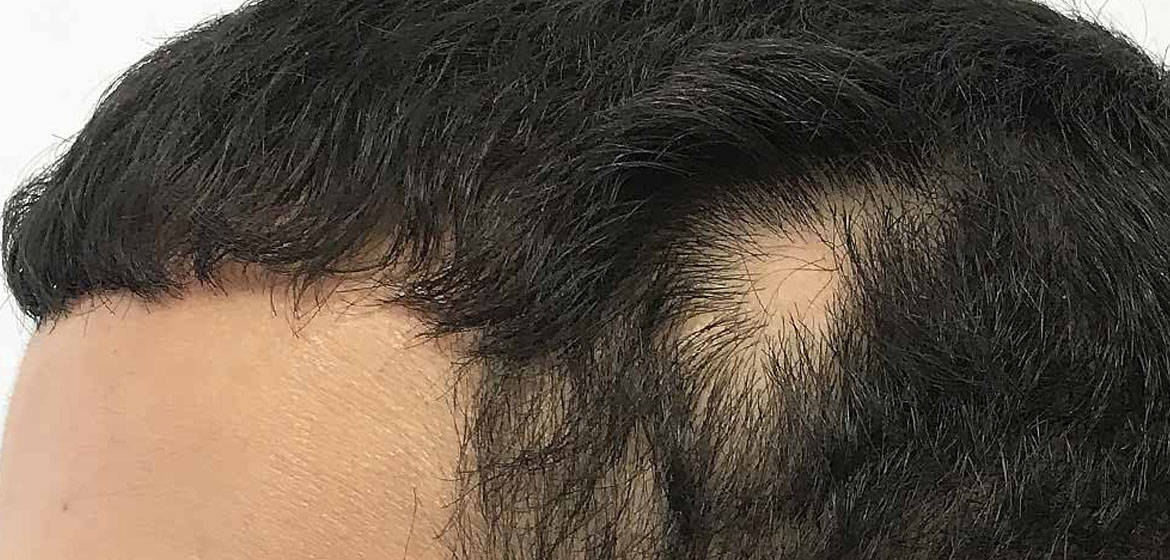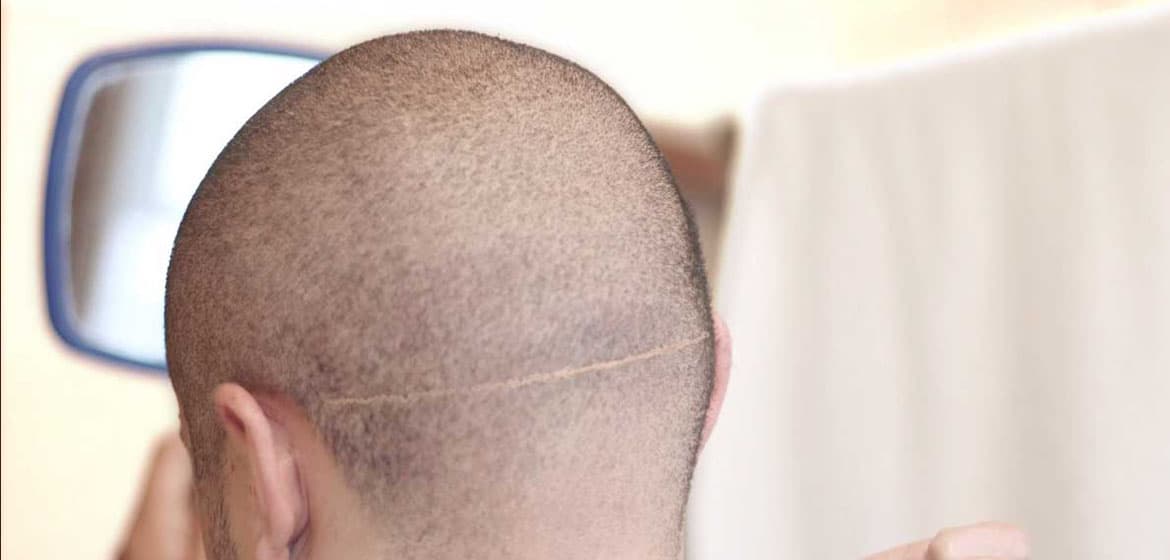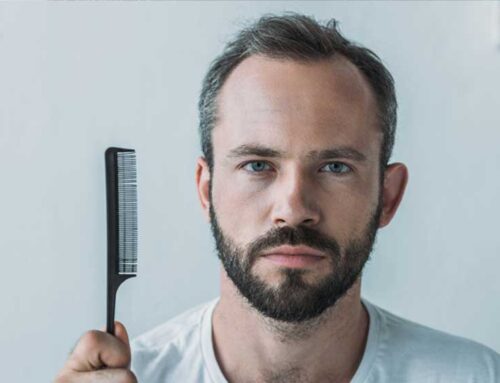Improve your scars appearance by Hair Transplant on Scars
Hair Transplant on Scars: Overview
Hair transplant on scars uses surgical techniques that have come a long way since the early days of hair plugs. Even so, scarring is still an inevitable byproduct of the procedure.
There are two types of surgical techniques (FUE and FUT Hair transplant) that are widely used today. Each one produces a different type of scarring. Your surgeon’s skill and experience can in large part determine the amount of scarring you’re left with.
Hair transplant on scars removal Process
Several procedures may be used to lessen or reduce the size of the scar created through the FUT procedure. Their success isn’t always guaranteed, and some scarring is almost certain to remain.
Keep in mind that as you age, your scalp will start to naturally sag. This can make the scalp reduction scar wider or more visible.
Another option might be to graft hair follicles into the FUT scar using the FUE method. The effectiveness of this solution will be determined, in part, by the thickness of the scar. Scar tissue can be thinned using the medication, making this more viable in some cases.
Scarred skin does not, however, always hold onto the grafts as well as healthy skin. Your doctor will be able to tell you if this procedure might work for you.

Possibility of Hair Transplant on Scars to Improve the appearance
In many cases, the answer is “yes” and certainly a wide variety of scarring issues. But the decision as to whether someone is a good candidate for repairing a scar with a hair transplant depends on a number of factors:
- The thickness of the scar. Sometimes scars can be very thick and this compromises the ability of hairs to grow in the scar. A number of techniques can be used to improve a thick scar and make it more receptive to receiving new hair follicles. This includes thinning the scar slightly with steroid injections and debulking the scar by removing bits of the scar before putting in new hair follicles.
- The thinness of the scar. Some scars are too thin to be successfully transplanted. The medical term for such thinning is ‘atrophy.’ Some scars are too atrophic to receive new hair follicles. When we do decide to proceed and transplant atrophic scars, we use a number of techniques to improve the growth and ‘uptake’ of transplanted hairs.
- Blood supply to the scar. Sometimes a scarring process in the scar can reduce the blood supply to the area and in turn reduce the chances of having successful uptake of hair follicles. Certain techniques, such as pre-operative and post-operative use of minoxidil to improve blood flow into a scarred area may be beneficial and is something we often recommend.
Do hair transplants themselves leave scars?
The FUT (Follicular Unit Transplant)/strip method of hair transplant does leave a linear scar where a strip of skin is taken from the donor area of the scalp in order to harvest healthy hair follicles.
However, since this scar is in an area of permanent hair growth – usually the back of the head – it is generally easy to conceal so long as the hair is worn at grade 4 or longer.
The FUE (Follicular Unit Excision) method meanwhile leaves only a series of tiny dot scars on the scalp, which are so small (typically less than 1mm) as to be scarcely noticeable, unless the head is completely shaved.
How to conceal scars after Transplant
Concealing the scarred area cosmetically is another option. This may be possible by growing your hair over the donor area. Certain types of scars, such as keloid scars, may be harder to conceal than others. Keloids are raised scars, which grow larger than the original surgical scar.
Keloid scars may continue to grow over months, or even years. Some people are prone to keloid scarring. Let your doctor know if you’ve already had a keloid scar before you undergo any type of hair transplant procedure.
There are also procedures that can help to disguise your scar:
-
Scalp micro pigmentation (SMP)
Also called medical hairline tattoo or scalp hair tattooing, this permanent procedure introduces injected pigment directly into the scalp, giving the appearance of thicker hair. Some people opt to use SMP instead of surgical hair transplant procedures.
This procedure can also be used to colour in the scarred areas left behind by FUE or FUT.
It may take several sessions to complete, depending on the size of the area being injected. The ink color is chosen to match your current hair color. Keep in mind that your hair may go gray or lighten, but the ink will probably not lighten at the same rate.
-
Trico pigmentation (TMP)
TMP is a temporary form of SMP. This procedure provides semi-permanent inking because it inserts the ink into the top layer of the dermis.
The length of time that inking from TMP lasts can vary from clinic to clinic, anywhere from six months to three years. This procedure may be physically uncomfortable for some people.
-
Laser treatment
This treatment may help reduce the appearance of scars and is sometimes used in conjunction with SMP or TMP. The laser targets and removes the damaged skin on the surface of the scar.
It also helps stimulate collagen production in the skin’s dermis layer, rejuvenating the elasticity and overall appearance of the skin.
This procedure was not designed specifically for hair transplant scar removal, and results may vary from person to person.

Scar Grafting Procedures
FUT hair transplant on scars leaves noticeable linear scars in donor spots. These scars may widen significantly, sometimes to disfiguring proportions. There are a few reasons for this mishap, including an overly tight scalp, too low a graft placement, or poor surgical technique.
Scars vary procedure by procedure. Some may be short while others will run from ear to ear. They often widen over time, occasionally to more than two centimeters – this can be noticeably deformative regardless of hair length.
Moderate hair length can usually conceal scars. Other times, though, they are apparent even with decent hair length. Scars can also change the direction of hair growth below the scar, relative to above the scar, which may cause a “shadow” of the linear scar to be evident even after hair somewhat grows out.
Rephair clinic hair transplant
Rephair is one of the finest hair transplant clinics operating in Istanbul, Tukey. We have a bunch of skillful doctors who are very much capable to carry hair transplants using advance machines. We use revolutionary hair transplant methods of FUE and DHI hair transplant.
So, it doesn’t matter if you have less hair on the head, mustache or beard? Or you are male or female? We have got you covered. Our doctors have more than 12 years of experience dealing with every issue that you might be facing including alopecia. Apart, from hair transplant, we also offer services of hair treatment at a very minimal cost.
We are globally recognized as we have worked in different countries like France, Italy, Germany, Greece, Russia and many more. Our primary mission is to provide the best hair transplant at a very affordable price so that everyone can avail the golden opportunity of hair transplant.
We also provide consultation services to the people who are confused in choosing what is best for them. For them, we have a professional team that takes care of our dear clients. We host foreign clients for their stay in an outclass manner. If in any case, our services don’t work out for you, we refund the customer without a single question asked. So, you don’t have to worry about that stuff too.
We warmly invite you to visit our clinic and enjoy what we are offering in the tremendous city of Istanbul.





